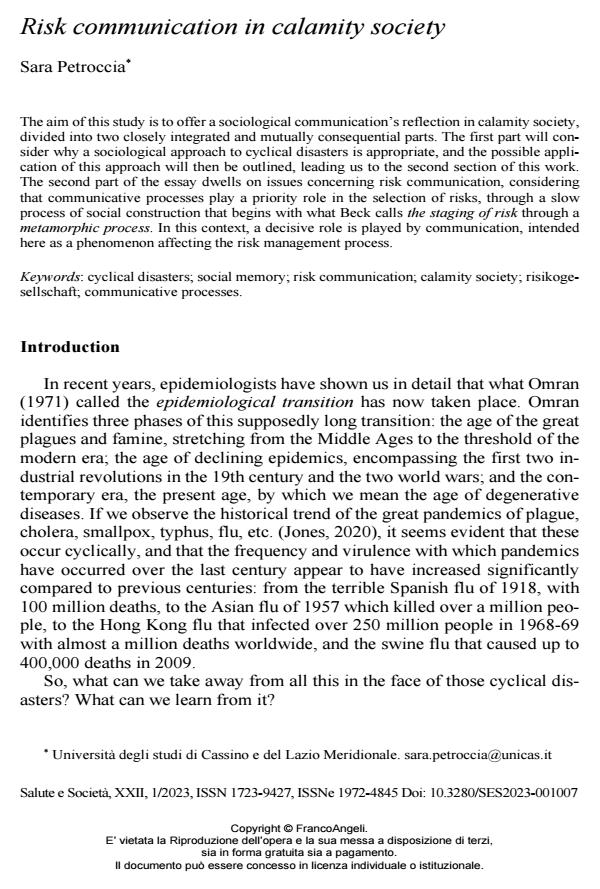Risk communication in calamity society
Journal title SALUTE E SOCIETÀ
Author/s Sara Petroccia
Publishing Year 2023 Issue 2023/1
Language English Pages 16 P. 85-100 File size 246 KB
DOI 10.3280/SES2023-001007
DOI is like a bar code for intellectual property: to have more infomation
click here
Below, you can see the article first page
If you want to buy this article in PDF format, you can do it, following the instructions to buy download credits

FrancoAngeli is member of Publishers International Linking Association, Inc (PILA), a not-for-profit association which run the CrossRef service enabling links to and from online scholarly content.
The aim of this study is to offer a sociological communication’s reflection in calamity society, divided into two closely integrated and mutually consequential parts. The first part will consid-er why a sociological approach to cyclical disasters is appropriate, and the possible application of this approach will then be outlined, leading us to the second section of this work. The sec-ond part of the essay dwells on issues concerning risk communication, considering that communicative processes play a priority role in the selection of risks, through a slow process of social construction that begins with what Beck calls the staging of risk through a metamorphic process. In this context, a decisive role is played by communication, intended here as a phenomenon affecting the risk management process.
Keywords: cyclical disasters; social memory; risk communication; calamity society; risikoge-sellschaft; communicative processes.
Sara Petroccia, Risk communication in calamity society in "SALUTE E SOCIETÀ" 1/2023, pp 85-100, DOI: 10.3280/SES2023-001007